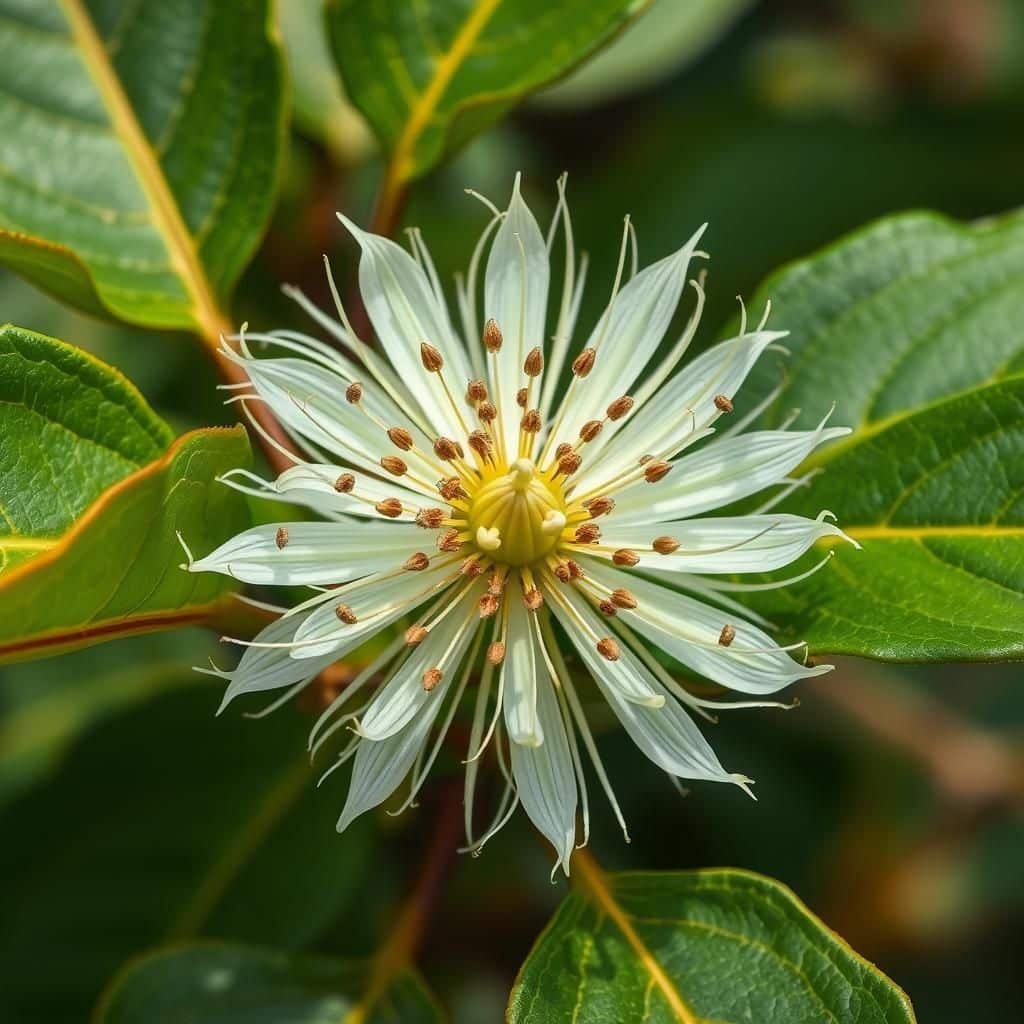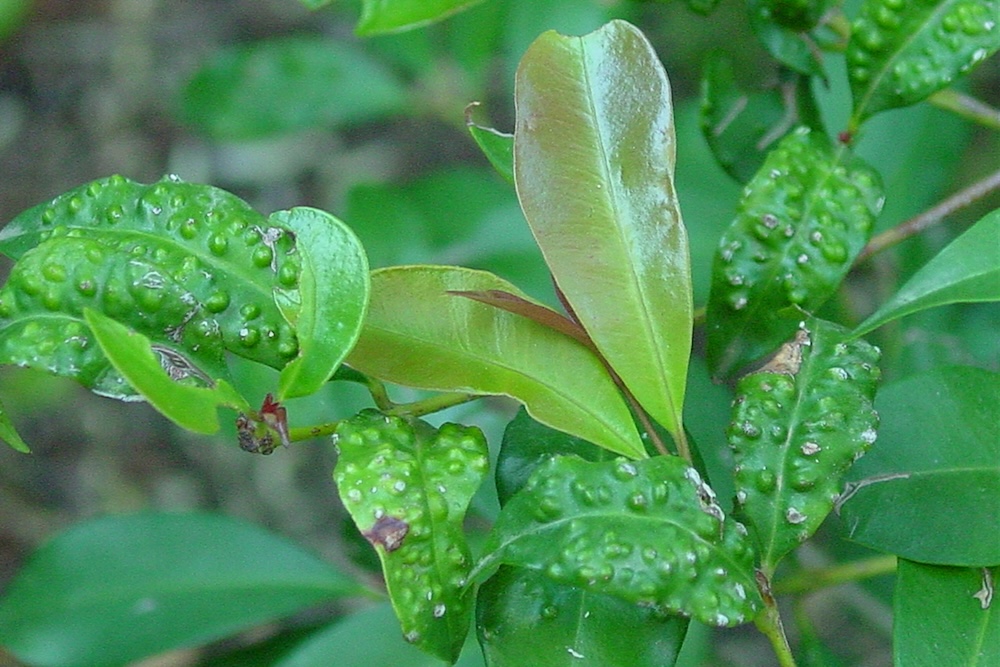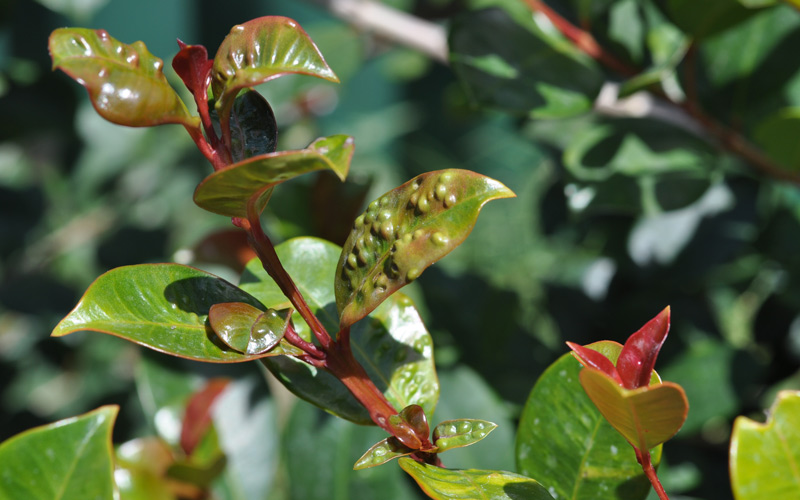Comprehensive Guide to Managing Lilly Pilly Pests and Diseases for a Healthy Garden

Lilly Pilly trees are treasured for their lush foliage and vibrant berries, making them popular choices for gardens and landscaping. However, like any plant, they are susceptible to a variety of pests and diseases that can threaten their health and beauty. This comprehensive guide aims to equip gardeners with the knowledge needed to identify common issues afflicting Lilly Pillys and implement effective management strategies. By understanding the pests and diseases that can impact these stunning plants, you can ensure a thriving garden that showcases the best of what Lilly Pillies have to offer. Your journey to a healthy garden starts here.
Lilly Pilly Pests and Diseases
Lilly Pilly, known for its attractive foliage and berries, is susceptible to various pests and diseases that can negatively impact its growth and aesthetic appeal. Common pests include the lychee bug, which feeds on the plant sap, leading to leaf damage, and caterpillars, which can defoliate young plants. Fungal diseases such as powdery mildew and phytophthora root rot are also prevalent, especially in poorly drained soils. Effective management strategies often involve maintaining plant health through proper watering, pruning, and the timely application of organic or chemical treatments to control outbreaks. Understanding the specific risks associated with Lilly Pilly can help gardeners implement preventative measures to protect these valuable plants.
Common Lilly Pilly Pests
Lilly Pilly plants frequently encounter a variety of pests that can lead to significant health issues if not managed promptly. Some of the more common pests include the lychee bug—known for its distinctive black and orange coloring—which feeds on leaf sap, resulting in yellowing and distortion. Other notable pests include aphids and spider mites, which can cause similar damage. Regular inspection and the use of insecticidal soaps or neem oil can help control these pest populations effectively.
Effects of Pests on Lilly Pilly
The impact of pests on Lilly Pilly can manifest in various ways, ultimately leading to compromised plant health. For example, the sap-sucking action of insects like the lychee bug can result in reduced vigor, stunted growth, and unsightly foliage. In severe infestations, these pests can also increase the plant's susceptibility to secondary infections and diseases, triggering a decline in overall resilience. Monitoring and early intervention are crucial for minimizing damage and ensuring the longevity of your Lilly Pilly.
Lilly Pilly Diseases
Fungal diseases are among the most concerning issues for Lilly Pilly plants. For instance, powdery mildew often appears during warm and humid conditions, presenting as a white powdery coating on leaves. This disease can hinder photosynthesis and weaken the plant over time. Another serious condition is phytophthora root rot, which predominantly affects plants in waterlogged soils, leading to root decay and eventual plant death. Prevention through proper cultural practices, such as ensuring well-drained soil and adequate spacing, can help mitigate these diseases.
Preventative Measures for Pests and Diseases
To safeguard Lilly Pilly from pests and diseases, implementing a range of preventative measures is essential. Regular pruning helps improve air circulation, reducing humidity levels that favor the development of diseases like powdery mildew. Utilizing mulch can regulate soil moisture and minimize root rot incidence. Additionally, integrated pest management strategies, including the use of beneficial insects and organic pesticides, can effectively manage pest populations while minimizing chemical use. Maintaining overall plant health through proper nutrition and care is the key to prevention.
Identifying Symptoms of Issues
Recognizing the early signs of pest infestations and diseases is critical for effective management of Lilly Pilly. Common symptoms can include yellowing leaves, wilting, and unusual webbing or spots on foliage, indicating potential pest presence. For diseases, look for signs such as white powdery spots or brown, mushy roots. Keeping a watchful eye on plants and understanding these symptoms will enable gardeners to react swiftly, providing the best chance for recovery and continued vigor of their Lilly Pilly.
| Pest/Disease | Symptoms | Management |
|---|---|---|
| Lychee Bug | Yellowing and distortion of leaves | Insecticidal soap or neem oil |
| Aphids | Leaf curling and sticky residue | Regular inspections and treatments |
| Powdery Mildew | White powdery spots on leaves | Improve air circulation and fungicides |
| Phytophthora Root Rot | Wilting and blackened roots | Well-drained soil and soil treatments |
| Caterpillars | Defoliation of leaves | Manual removal or traps |
What are the mites on my Lilly Pilly?

Mites on your Lilly Pilly are likely tiny arachnids that can cause various issues to your plants. These pests typically belong to the family Tetranychidae, which includes spider mites. They are often not easily visible to the naked eye, but their presence can be detected by the damage they inflict on the leaves of the Lilly Pilly.
Types of Mites Affecting Lilly Pilly
There are several species of mites that can infest Lilly Pilly plants. The most common include:
- Spider mites - They are tiny and often appear as small, moving dots on the undersides of leaves.
- Broad mites - These are also small and tend to cause curling and distortion in younger leaves.
- Tetranychus urticae - Commonly known as the two-spotted spider mite, it's notorious for its rapid reproduction and extensive damage.
Signs of Mite Infestation
Identifying a mite infestation early is crucial for effective management. Common signs include:
- Discoloration - Leaves may exhibit a yellowing or bronzing due to feeding.
- Webbing - Spider mites may create fine webbing on the plants, often seen in severe cases.
- Leaf Damage - Look for stippling or tiny pinpricks, which indicate leaf tissue damage from feeding.
Conditions Favoring Mite Infestations
Certain environmental factors can contribute to the prevalence of mite infestations on Lilly Pilly:
- Drought Stress - Dry conditions can weaken the plants, making them more susceptible to mites.
- High Temperatures - Mites thrive in warm climates, leading to faster reproduction rates during hot weather.
- Low Humidity - Mites prefer dry air, which can enhance their survival and reproduction.
Control Methods for Mites on Lilly Pilly
Managing mite populations on Lilly Pilly involves several strategies:
- Natural Predators - Introducing beneficial insects like ladybugs can help reduce mite numbers.
- Insecticidal Soaps - These can be effective if applied thoroughly, targeting mites directly.
- Regular Watering - Keeping plants hydrated can help them resist mite infestations by reducing stress.
Prevention Strategies
Preventing mite infestations on Lilly Pilly is crucial for maintaining healthy plants. Consider the following measures:
See also:
- Regular Inspections - Frequently check your plants for signs of mites or other pests.
- Proper Spacing - Ensure adequate airflow around plants to minimize humidity and mite risk.
- Healthy Soil Practices - Using organic fertilizers can improve plant health, making them more resilient to pests.
What does psyllid damage look like?

Psyllid damage manifests primarily on the foliage of affected plants, leading to a range of visible symptoms that can severely impact plant health. Psyllids are small, sap-sucking insects that feed primarily on young plant tissues. The damage can vary depending on the species of psyllid and the plant type, but there are several common indicators of their presence and the harm they inflict.
Signs of Psyllid Infestation
Psyllid infestations can often be identified through distinctive signs that typically appear on the leaves and stems of plants.
- Leaf curling: Leaves may start to curl upwards or downwards, often causing a distorted appearance.
- Honeydew secretion: As psyllids feed, they excrete a sticky substance known as honeydew, which can lead to sooty mold growth.
- Yellowing of leaves: Affected leaves may turn yellow, a condition known as chlorosis, which indicates nutrient deficiencies.
Types of Damage Caused by Psyllids
The impact of psyllids on plants can be categorized into several types of damage. Understanding these can help in diagnosing the problem effectively.
- Direct feeding damage: This is caused by the psyllids themselves as they extract sap, weakening the plant.
- Transmission of diseases: Some psyllids are vectors for plant pathogens, leading to further disease complications.
- Stunted growth: Overall plant growth may be stunted due to the stress caused by psyllid feeding.
Effects on Plant Health and Yield
Psyllid damage can significantly reduce plant vigor and overall yield, which is especially critical for agricultural crops.
- Reduced photosynthesis: Damaged leaves may result in lower rates of photosynthesis, impacting the plant's energy production.
- Compromised structural integrity: Continuous feeding and damage can make plants more susceptible to breakage and environmental stresses.
- Lower crop yields: For commercial growers, the presence of psyllids can lead to diminished harvests, affecting profit margins.
Visual Indicators of Psyllid Damage
When examining plants, certain visual indicators can aid in the identification of psyllid damage, making early intervention possible.
- Distorted leaf shape: Leaves may not only curl but can also exhibit irregular shapes.
- Presence of psyllids: Adults are small and often visible on the undersides of leaves.
- Blackened fungal growth: The honeydew excreted often attracts sooty mold, which appears as a black film on leaves.
Management and Control Measures for Psyllid Damage
To minimize the damage caused by psyllids, various management strategies can be employed.
- Regular monitoring: Frequent inspections of plants can help identify infestations early.
- Biological control: Introducing natural predators, such as ladybugs, can help manage psyllid populations.
- Pesticide application: In severe cases, the application of targeted insecticides may be necessary to reduce psyllid numbers.
What is the fungal infection on Lilly Pilly?

Lilly Pilly, a popular plant in gardens and landscaping, can be susceptible to various fungal infections that affect its health and appearance. One of the most common fungal infections that affects Lilly Pilly is Psychotria lonicera, particularly Corynespora cassiicola. This fungus can lead to severe leaf spotting, premature leaf drop, and overall decline in the plant's vigor. The infection typically manifests on older leaves as dark spots which can eventually expand, causing substantial damage to the foliage.
Signs and Symptoms of Fungal Infection on Lilly Pilly
The symptoms of fungal infection on Lilly Pilly can vary but typically include the following:
- Dark spots on leaves that may grow larger over time.
- Leaf drop due to the severe impact on leaf structure.
- Stunted growth may be observed as the plant battles the infection.
Identifying these symptoms early is crucial for effective management and treatment.
Causes of Fungal Infection in Lilly Pilly
Fungal infections in Lilly Pilly are generally caused by a combination of environmental factors and plant stressors. The primary causes include:
- High humidity and poor air circulation create an ideal environment for fungi to thrive.
- Overwatering which leads to waterlogged soil and encourages fungal growth.
- Nutrient-deficient soil can weaken the plant, making it more susceptible to infections.
Understanding these causes can help in preventing the outbreak of fungal diseases.
Treatment Options for Fungal Infection
Addressing fungal infections on Lilly Pilly involves a multifaceted approach:
See also:
- Cultural practices such as improving airflow and reducing humidity around the plant.
- Fungicides can be applied to manage the spread of the infection effectively.
- Regular monitoring for any emerging symptoms to take quick action.
Implementing these treatments early can help restore the health of the Lilly Pilly.
Prevention of Fungal Infection in Lilly Pilly
Preventive measures are essential for maintaining the health of Lilly Pilly and reducing the risk of fungal infections:
- Proper watering techniques to avoid overwatering and keep the soil well-drained.
- Regular pruning to enhance air circulation and remove affected leaves.
- Fertilization with balanced nutrients to strengthen the plant's defenses against diseases.
These proactive steps can help maintain a healthy environment for Lilly Pilly.
Importance of Early Detection and Treatment
Early detection and treatment of fungal infections are vital for the health of Lilly Pilly:
- Slowing down the spread of infection can save the plant and prevent further damage.
- Reducing treatment costs as early intervention often requires less drastic measures.
- Promoting overall plant health by maintaining vitality and vigor through timely action.
Staying vigilant and proactive in monitoring allows gardeners to safeguard their Lilly Pilly from fungal infections.
What are the disadvantages of Lilly Pilly?

Lilly Pilly, scientifically known as Syzygium, is a popular Australian native plant commonly used in landscaping due to its attractive foliage and berries. However, there are several disadvantages to consider when incorporating this plant in gardens or landscapes.
Susceptibility to Pests and Diseases
Lilly Pilly plants can be highly susceptible to various pests and diseases, which can significantly affect their health and appearance. Some common issues include:
- Psychid Moths: These pests can cause serious damage to the leaves, resulting in unsightly webbing and leaf loss.
- Root Rot: Overwatering or poor drainage can lead to root rot, which can be fatal for the plant.
- Fungal Infections: Conditions such as powdery mildew can thrive in humid environments, causing further decline in plant health.
Allergic Reactions
Many individuals may experience allergic reactions to Lilly Pilly plants. The leaves and berries can produce irritating effects for sensitive individuals. Key issues include:
- Skin Irritation: Contact with the leaves can lead to rashes or allergic dermatitis.
- Respiratory Issues: Pollen from Lilly Pilly can trigger asthma attacks or hay fever in susceptible individuals.
- Digestive Problems: Ingesting the berries may result in gastrointestinal distress for those with allergies.
Invasive Potential
Some varieties of Lilly Pilly have shown an ability to be quite invasive in certain regions. This invasive nature can disrupt local ecosystems and biodiversity. Considerations include:
- Displacement of Native Species: Lilly Pilly can outcompete local flora for resources, leading to a decline in native plant populations.
- Alteration of Habitat: Their rapid growth can change the structure of habitats, affecting wildlife that depend on native plants.
- Difficulty in Management: Once established, controlling their spread can be challenging and resource-intensive.
Maintenance Requirements
Maintaining Lilly Pilly can be a labor-intensive endeavor, requiring consistent care to keep the plant healthy and visually appealing. Factors affecting maintenance include:
- Regular Pruning: To maintain desired shape and size, frequent trimming is necessary, which can be time-consuming.
- Watering Schedule: Adhering to a consistent watering routine is essential to prevent stress and disease.
- Fertilization Needs: Annual fertilization may be necessary to ensure healthy growth and flowering.
Fruit Mess and Litter
While Lilly Pilly berries can be attractive, they often create a mess on the ground when dropped. This can be an issue for homeowners. Specific concerns include:
- Ground Debris: Fallen berries and leaves can accumulate, creating a messy appearance that requires regular cleanup.
- Attracting Pests: The decaying fruit can attract insects and rodents, potentially leading to pest infestations.
- Staining: The juice from the berries can stain walkways, driveways, and patios, complicating maintenance efforts.
Questions from Our Readers
What are the most common pests that affect Lilly Pilly plants?
Lilly Pilly plants are commonly affected by pests such as psyllids, whiteflies, and aphids. These pests can cause significant damage by sucking the sap from the leaves, leading to yellowing, curling, and even leaf drop if not managed properly.
How can I identify diseases in my Lilly Pilly plants?
Diseases in Lilly Pilly plants can manifest through symptoms like leaf spots, stem cankers, and dieback. Common signs include discoloration, wilting, or mold growth. If you notice any unusual changes in your plant's foliage or growth, a closer inspection may reveal underlying disease issues.
See also:
What are effective treatments for pests on Lilly Pilly?
To control pests on Lilly Pilly, you can use a variety of methods including insecticidal soaps, neem oil, or beneficial insects such as ladybugs. Regularly monitoring your plants and applying treatments as needed can help keep pest populations under control and maintain the plant's health.
Are there any preventive measures for diseases in Lilly Pilly?
Preventing diseases in Lilly Pilly involves ensuring proper drainage, avoiding overcrowding, and maintaining good air circulation around the plants. Regularly inspecting for pests can also aid in early detection, reducing the likelihood of disease development caused by stressed plants.

If you want to read more articles like Comprehensive Guide to Managing Lilly Pilly Pests and Diseases for a Healthy Garden, we recommend you check out our Shrubs category.
Leave a Reply
Related Articles